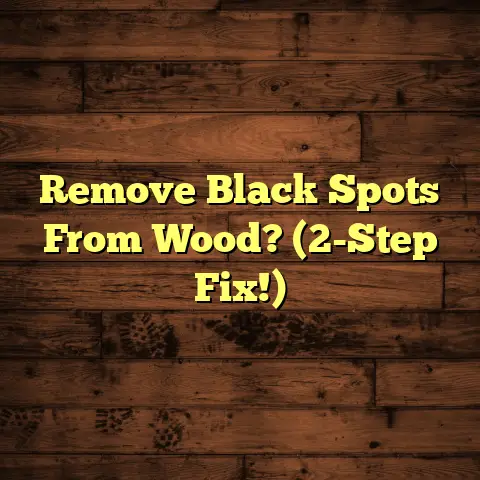Rug Colors for Dark Hardwood (4 Designer Tips!)
4 Designer Tips!
As a flooring contractor for over 15 years, I’ve seen it all when it comes to hardwood floors.And believe me, finding the perfect rug to complement those beautiful, dark planks can be a game-changer.
But it’s not just about aesthetics, is it? It’s also about making choices that are good for our planet. Let’s dive into how you can nail that perfect look and embrace sustainability.
The Rise of Eco-Conscious Design
These days, everyone’s talking about sustainability, and for good reason. We’re all becoming more aware of the impact our choices have on the environment.
Did you know that the textile industry is a major polluter? According to the World Resources Institute, textile production contributes to 10% of global carbon emissions. https://www.wri.org/insights/numbers-behind-fashion
That’s a sobering thought, right?
But the good news is that the home décor industry is catching on. We’re seeing more and more rugs made from recycled materials, like plastic bottles or sustainably sourced fibers like organic cotton and jute.
Choosing a rug made from these materials is a fantastic way to reduce your environmental footprint while still creating a stylish space.
And let’s be honest, the right rug color can completely transform a room. It can influence the mood, highlight your furniture, and even make your space feel larger or cozier.
So, how do you find that perfect balance between style and sustainability? Let’s explore some designer tips to help you choose the perfect rug color for your dark hardwood floors while keeping our planet in mind.
Tip 1: Embrace Natural Tones
Okay, let’s kick things off with a classic: natural tones. Think about colors like beige, taupe, cream, and soft greens.
These colors are like a breath of fresh air against the richness of dark hardwood. They create a sense of calm and warmth, making your space feel instantly inviting.
Why do these colors work so well? Well, they mimic the colors found in nature, creating a harmonious blend with the wood.
It’s like bringing the outdoors in! Plus, these colors are incredibly versatile. They can work with a variety of design styles, from modern farmhouse to bohemian chic.
Sustainable Material Options
Now, let’s talk about sustainable materials. When it comes to natural tones, you’ve got some fantastic eco-friendly options:
-
Organic Cotton: Grown without harmful pesticides or fertilizers, organic cotton is a soft and sustainable choice.
-
Jute: This natural fiber is incredibly durable and biodegradable. It adds a beautiful texture to your rug and is a renewable resource.
-
Wool: When sourced responsibly, wool is a fantastic option. Look for rugs made from sheep that are raised in humane conditions and that the wool is processed using eco-friendly methods.
Did you know that wool is naturally stain-resistant and fire-retardant? That’s a win-win!
Seeing is Believing
Let me paint you a picture. Imagine a living room with dark walnut hardwood floors. Now, picture a large area rug in a soft, creamy beige.
The contrast between the dark wood and the light rug is stunning! The room feels bright and airy, yet still warm and inviting.
Add some natural textures like linen throw pillows and a woven coffee table, and you’ve created a space that’s both stylish and sustainable.
Or how about a bedroom with dark cherry hardwood floors? A rug in a muted sage green would create a serene and calming atmosphere.
Imagine waking up every morning to that peaceful view!
I’ve personally used these combinations in several projects, and the results are always amazing. Clients rave about how the natural tones make their homes feel more relaxing and connected to nature.
Here’s a quick tip: when choosing a natural tone, consider the undertones of your hardwood. If your wood has warm undertones (red or orange), opt for rugs with similar warm undertones.
If your wood has cool undertones (gray or blue), choose rugs with cool undertones. This will help create a cohesive and balanced look.
Tip 2: Bold Contrasts
Ready to make a statement? Then let’s talk about bold contrasts! Pairing vibrant colors with dark hardwood can create a dramatic and eye-catching effect.
Think about colors like:
- Vibrant Reds: For a touch of energy and passion.
- Deep Blues: To add a sense of sophistication and depth.
- Rich Yellows: For a pop of sunshine and cheerfulness.
These colors can serve as focal points, drawing attention to the rug and creating a dynamic visual contrast against the dark hardwood.
Why Bold Works
The key to pulling off bold contrasts is to balance the intensity of the color with the rest of the room.
You don’t want the rug to overpower the space. Instead, you want it to complement the other elements.
For example, if you choose a vibrant red rug, consider using softer, more neutral colors for your furniture and walls.
This will allow the rug to shine without overwhelming the room.
Also, think about the size of your rug. A large, bold rug can make a big statement, while a smaller rug can add a subtle pop of color.
Sustainable Bold Options
Now, you might be thinking, “Are there even sustainable options for these bold colors?” Absolutely!
Here are some things to look for:
-
Recycled Materials: Rugs made from recycled plastic bottles can come in a surprisingly wide range of colors. These rugs are durable, easy to clean, and help reduce plastic waste.
-
Eco-Friendly Dyes: Look for rugs that are dyed with natural or low-impact dyes. These dyes are less harmful to the environment than traditional synthetic dyes.
-
Vintage Rugs: Consider sourcing a vintage rug in a bold color. This is a great way to give a second life to a beautiful piece and reduce your environmental impact.
I’ve found some incredible vintage rugs at local flea markets and antique stores. It’s like treasure hunting!
Bold in Action
Let’s imagine a dining room with dark mahogany hardwood floors. A rug in a deep, sapphire blue would create a sophisticated and elegant atmosphere.
Pair it with a white dining table and chairs, and you’ve got a stunning contrast that’s sure to impress your guests.
Or how about a home office with dark oak hardwood floors? A rug in a vibrant yellow would add a touch of energy and creativity to the space.
It’s the perfect way to brighten up your workday!
I once helped a client design a living room with dark Brazilian cherry hardwood floors. She was hesitant to go bold, but I convinced her to try a rug with a vibrant red and orange pattern.
The result was incredible! The rug completely transformed the room, adding warmth and personality. She was thrilled with the final result and couldn’t believe how much the rug elevated the entire space.
Tip 3: Patterns and Textures
Alright, let’s move on to patterns and textures. Adding a rug with an interesting pattern or texture is a fantastic way to add depth and visual interest to a room with dark hardwood floors.
Pattern Power
Intricate patterns can add a layer of sophistication and complexity to your space. Think about options like:
- Geometric Patterns: For a modern and graphic look.
- Floral Designs: To add a touch of romance and whimsy.
- Abstract Styles: For a more artistic and unique feel.
The key is to choose a pattern that complements the style of your room. If you have a modern space, a geometric pattern would be a great choice.
If you have a more traditional space, a floral design might be a better fit.
Texture Talk
Texture is another important element to consider. A rug with a high pile or a unique weave can add a sense of warmth and comfort to your room.
Think about options like:
- Shag Rugs: For a cozy and inviting feel.
- Woven Rugs: To add a rustic and natural touch.
- Sculpted Rugs: For a more modern and artistic look.
Again, the key is to choose a texture that complements the style of your room. A shag rug would be perfect for a cozy living room, while a woven rug would be great for a rustic dining room.
Sustainable Pattern and Texture Options
Luckily, there are plenty of sustainable rug brands that specialize in patterned and textured options.
Here are some things to look for:
-
Brands that use natural dyes: As mentioned before, natural dyes are less harmful to the environment.
-
Brands that use recycled materials: Look for rugs made from recycled wool, cotton, or even plastic bottles.
-
Brands that support fair labor practices: Choose brands that ensure their workers are paid fair wages and work in safe conditions.
I recently discovered a brand that makes rugs from recycled fishing nets. How cool is that? Not only are they creating beautiful rugs, but they’re also helping to clean up our oceans!
Pattern and Texture in Practice
Imagine a bedroom with dark walnut hardwood floors. A rug with a subtle geometric pattern in shades of gray and white would create a modern and sophisticated look.
Add some textured throw pillows and a chunky knit blanket, and you’ve got a cozy and stylish space.
Or how about a living room with dark maple hardwood floors? A rug with a floral design in shades of blue and green would add a touch of romance and whimsy.
Pair it with some vintage furniture and some colorful artwork, and you’ve created a unique and eclectic space.
I had a client who was struggling to add personality to her living room. It had dark bamboo hardwood floors and neutral furniture, but it felt a bit bland.
I suggested a rug with an abstract pattern in bold colors. She was hesitant at first, but she trusted my judgment.
The rug completely transformed the room! It added so much personality and character. She was so happy with the final result and couldn’t believe how much the rug elevated the entire space.
Tip 4: Layering Techniques
Last but not least, let’s talk about layering rugs. Layering rugs is a fantastic way to add depth, texture, and visual intrigue to a room with dark hardwood floors.
The Layering Effect
The basic idea is to layer a smaller rug on top of a larger rug. This creates a sense of depth and dimension, making your space feel more inviting and comfortable.
You can layer rugs of different sizes, shapes, colors, and textures to create a unique and personalized look.
For example, you could layer a small, patterned rug on top of a larger, solid-colored rug. Or you could layer a shag rug on top of a flat-weave rug.
The possibilities are endless!
Layering Benefits
Layering rugs isn’t just about aesthetics. It also has some practical benefits.
For example, layering rugs can add extra warmth and insulation to a room. This is especially helpful in colder climates.
Layering rugs can also help to define different areas within a larger space. This is great for open-concept living areas.
And, of course, layering rugs can help to protect your hardwood floors from wear and tear.
Sustainable Layering
When layering rugs, it’s important to consider sustainability. Choose rugs from ethical brands that promote sustainable production methods.
Look for rugs made from recycled materials or sustainably sourced fibers.
And don’t be afraid to mix and match different textures and patterns. This is a great way to create a unique and eco-friendly look.
Layering in Action
Imagine a living room with dark oak hardwood floors. You could start with a large jute rug as a base.
Then, layer a smaller, patterned wool rug on top. This would create a cozy and inviting space with plenty of texture and visual interest.
Or how about a bedroom with dark cherry hardwood floors? You could start with a large, solid-colored cotton rug as a base.
Then, layer a smaller, shag rug on top. This would create a luxurious and comfortable space that’s perfect for relaxing.
I recently helped a client redesign her home office. She had dark walnut hardwood floors and wanted to create a space that was both functional and stylish.
I suggested layering a large, sisal rug as a base. Then, we layered a smaller, patterned kilim rug on top.
The result was stunning! The layering created a sense of depth and warmth, making the office feel more inviting and comfortable.
She loved the final result and said that it completely transformed her workspace.
Conclusion
So, there you have it: four designer tips for choosing the perfect rug colors for your dark hardwood floors.
Remember, the key is to find a balance between style and sustainability.
Choose rugs made from eco-friendly materials, dyed with natural dyes, and produced by ethical brands.
And don’t be afraid to experiment with different colors, patterns, and textures.
After all, decorating your home should be a fun and creative process!
By making mindful choices, you can create a beautiful and environmentally responsible living space that you’ll love for years to come. Now, go out there and create the home of your dreams!





